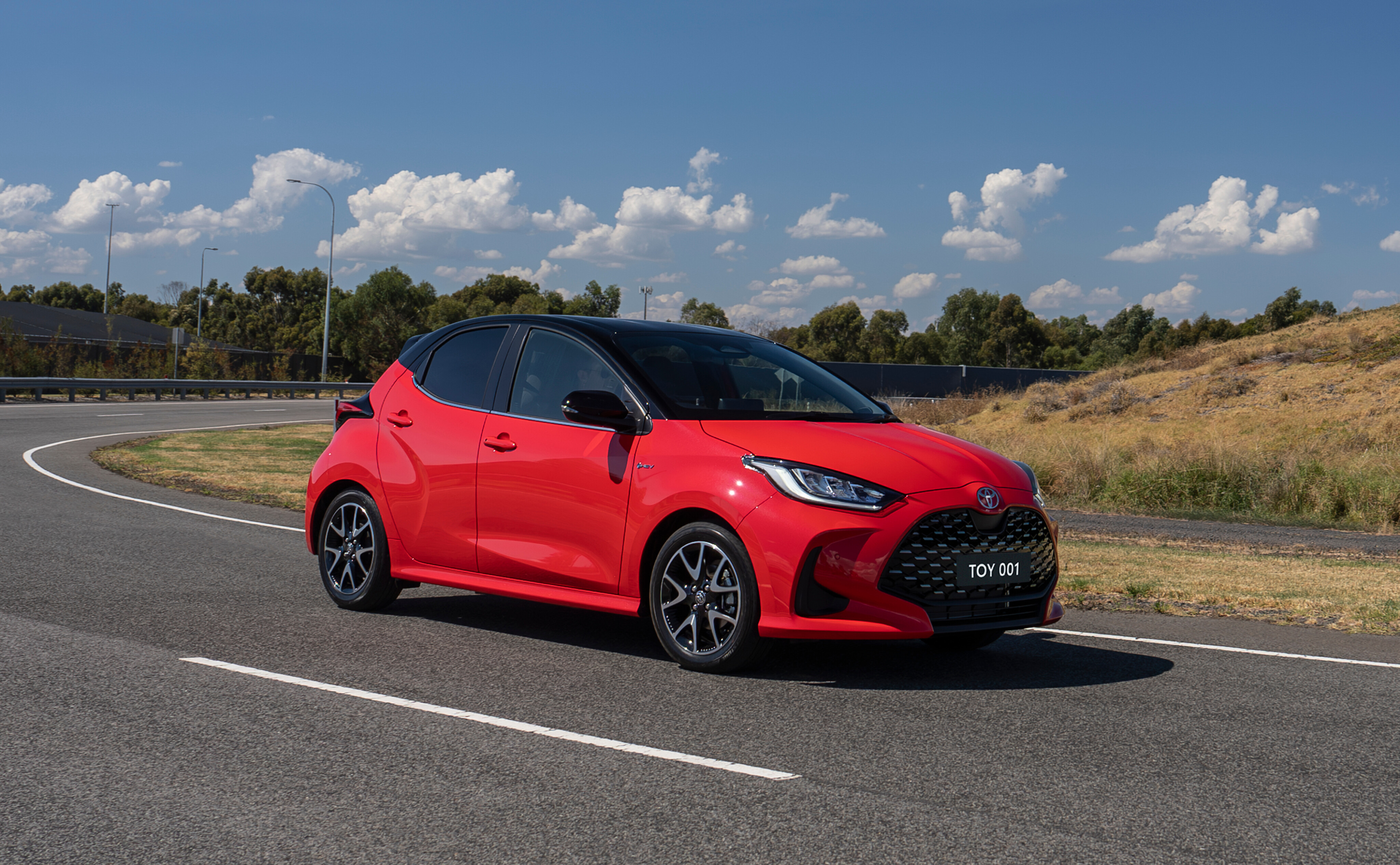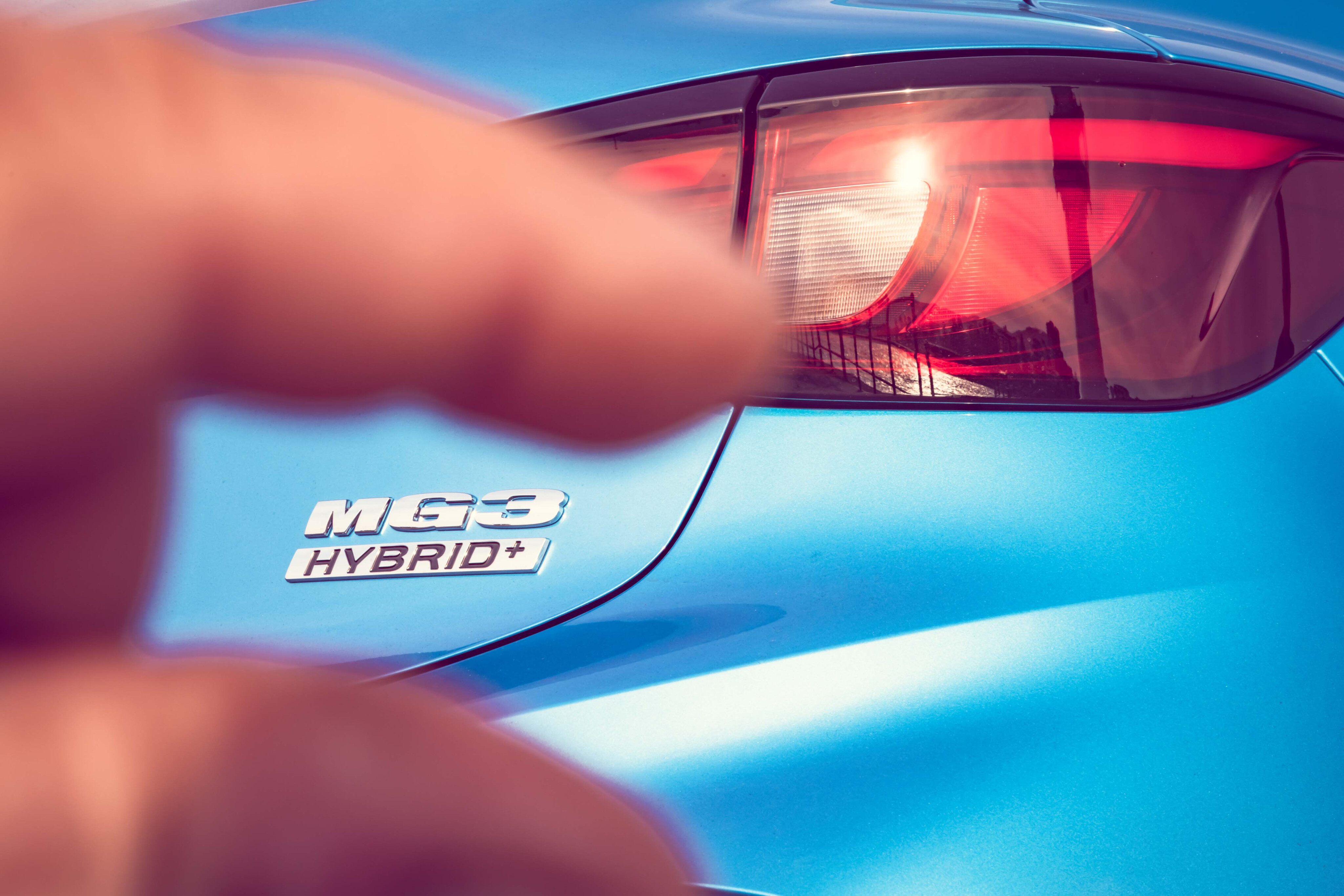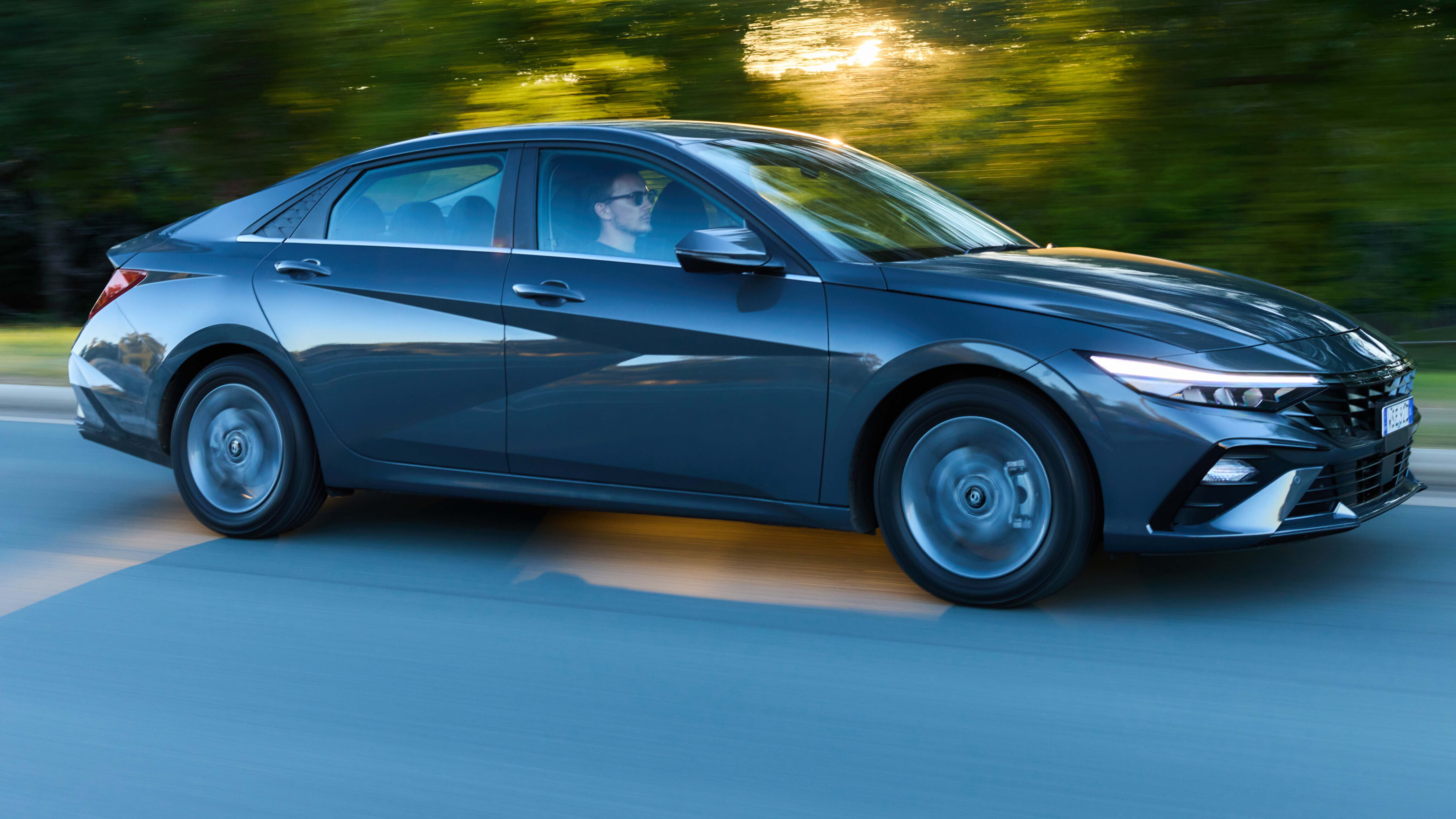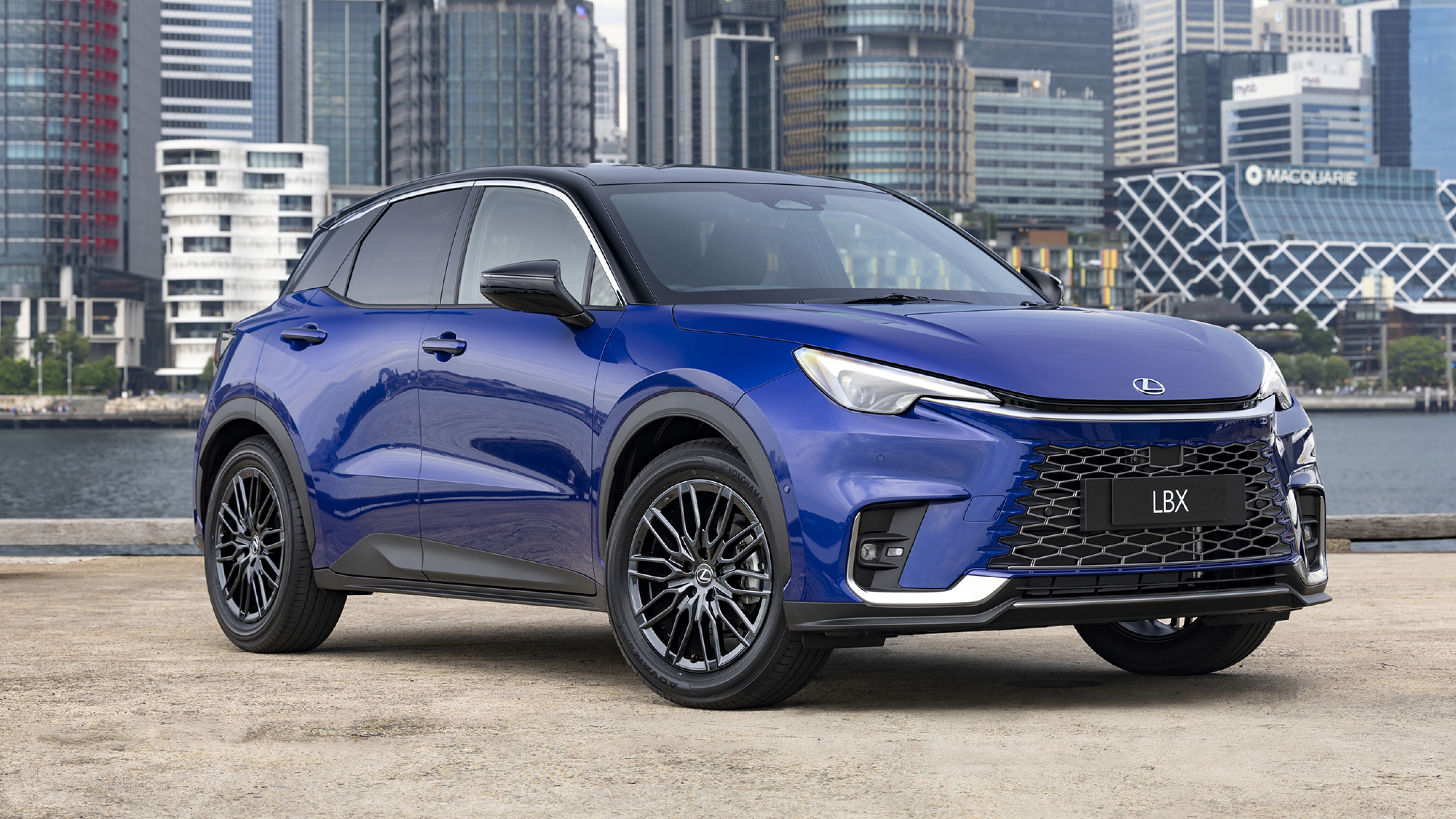
What are Australia's best cars for good fuel efficiency?
Plug-in hybrid vehicles (PHEVs) often steal the spotlight regarding fuel-efficient internal-combustion cars, but other relatively green vehicles are available in Australia today.
While Toyota Australia has retired the pioneering Prius hatchback after 21 years on sale, the 'regular' hybrid powertrain – with no need to plug in – has become an increasingly popular, mainstream choice.
The most popular variants of Australia’s best-selling crossover, the Toyota RAV4 midsize SUV, now feature a hybrid powertrain, while other brands such as Honda, Kia, Hyundai and Lexus also offer petrol-electric options.

WhichCar has compiled data revealing each non-PHEV vehicle currently available in Australia with a combined fuel efficiency rated at five litres per 100 kilometres or less.
How is fuel consumption measured?
'Litres per 100km' is exactly as stated, relating to the distance you can travel on an amount of fuel. A lower number demonstrates better fuel-efficiency.
For example, a vehicle with a 40-litre fuel tank with a claimed fuel consumption of 5.0L/100km will travel 800 kilometres from full to empty.
However, this is in an ideal situation, as a vehicle's true fuel economy can differ based on various driving conditions and your own approach to driving – including vehicle and occupant weight, acceleration, the weather, air-conditioning, windows up or down, tyre pressures, and the route.
(Then, of course, there's the 'fuel reserve light'...)

Firstly, which car uses the least fuel of all cars in Australia?
The tiny Toyota Yaris Hybrid, powered by a low-capacity 1.5-litre three-cylinder engine with an electric motor, is currently the champ for using only a little fuel, claimed at just 3.3L/100km. In our most recent testing, we achieved an impressive 4.1L/100km in regular 'daily driver' activity.
The Yaris hybrid is followed by over 40 variants from 10 brands that lightly sip their fuel.
Those include...
Most of the vehicles featured include a hybrid powertrain; however, some pure petrol and diesel internal-combustion vehicles – including the Audi A3, Mazda CX-60 and Volkswagen Caddy – also feature on the interactive graph below.
A more-comprehensive table detailing each vehicle’s engine, transmission, fuel and drive type, variant and combined fuel consumption (L/100km) is available below:
UPDATED: June 2024
Note: Table scrolls horizontally to reveal more columns
| Model | Variant | Combined fuel consumption (L/100km) | Engine | Fuel | Minimum RON | Transmission | Drive | Combined CO2 output (g/km) |
|---|---|---|---|---|---|---|---|---|
| Toyota Yaris | Ascent Sport, SX, ZR | 3.3L | 3-cyl, 1.5-litre hybrid | Petrol | 91 | Automatic | FWD | 76g |
| Lexus LBX | Luxury, Sports Luxury | 3.8L | 3-cyl, 1.5-litre hybrid | Petrol | 91 | Automatic | FWD | 87g |
| Lexus LBX | Sports Luxury | 3.8L | 3-cyl, 1.5-litre hybrid | Petrol | 91 | Automatic | AWD | 87g |
| Suzuki Swift | base | 3.8L | 3-cyl, 1.2-litre mild-hybrid | Petrol | 95 | Manual | FWD | 85g |
| Toyota Yaris Cross | GX, GXL, GR Sport, Urban | 3.8L | 3-cyl, 1.5-litre hybrid | Petrol | 91 | Automatic | FWD | 86g |
| Hyundai i30 Sedan | Hybrid | 3.9L | 4-cyl, 1.6-litre hybrid | Petrol | 91 | Automatic | FWD | 92g |
| Hyundai Kona | Hybrid, Premium Hybrid | 3.9L | 4-cyl, 1.6-litre hybrid | Petrol | 91 | Automatic | FWD | 89g |
| Toyota Corolla sedan | Ascent Sport, SX, ZR Hybrid | 3.9L | 4-cyl, 1.8-litre hybrid | Petrol | 91 | Automatic | FWD | 86g |
| Kia Niro | S, GT-Line Hybrid | 4.0L | 4-cyl, 1.6-litre hybrid | Petrol | 91 | Automatic | FWD | 91g |
| Suzuki Swift | base, Plus, GLX | 4.0L | 3-cyl, 1.2-litre mild-hybrid | Petrol | 95 | Automatic | FWD | 90g |
| Toyota C-HR | GXL, Koba | 4.0L | 4-cyl, 1.8-litre hybrid | Petrol | 91 | Automatic | FWD | 89g |
| Toyota Corolla hatch | Ascent Sport, SX, ZR | 4.0L | 4-cyl, 1.8-litre hybrid | Petrol | 91 | Automatic | FWD | 97g |
| Toyota Yaris Cross | GX, GXL, Urban | 4.0L | 3-cyl, 1.5-litre hybrid | Petrol | 91 | Automatic | AWD | 90g |
| Toyota C-HR | GR Sport | 4.1L | 4-cyl, 2.0-litre hybrid | Petrol | 91 | Automatic | AWD | 94g |
| Honda Civic | E:HEV LX | 4.2L | 4-cyl, 2.0-litre hybrid | Petrol | 91 | Automatic | FWD | 96g |
| Lexus UX | UX300h | 4.2L | 4-cyl, 2.0-litre hybrid | Petrol | 91 | Automatic | FWD | 103g |
| Toyota Camry | Ascent Hybrid, Ascent Sport | 4.2L | 4-cyl, 2.5-litre hybrid | Petrol | 95 | Automatic | FWD | 96g |
| Honda Accord | E:HEV RS | 4.3L | 4-cyl, 2.0-litre hybrid | Petrol | 91 | Automatic | FWD | 98g |
| Honda HR-V | E:HEV L | 4.3L | 4-cyl, 1.5-litre hybrid | Petrol | 91 | Automatic | FWD | 98g |
| MG3 | Excite Hybrid+, Essence Hybrid+ | 4.3L | 4-cyl, 1.5-litre hybrid | Petrol | 95 | Automatic | FWD | 100g |
| Toyota Corolla Cross | GX, GXL, Atmos Hybrid | 4.3L | 4-cyl, 2.0-litre hybrid | Petrol | 91 | Automatic | FWD | 97g |
| Lexus UX | UX300h | 4.4L | 4-cyl, 2.0-litre hybrid | Petrol | 91 | Automatic | AWD | 107g |
| Toyota Corolla Cross | GXL, Atmos Hybrid | 4.4L | 4-cyl, 2.0-litre hybrid | Petrol | 91 | Automatic | AWD | 101g |
| Toyota Camry | SL | 4.5L | 4-cyl, 2.5-litre hybrid | Petrol | 95 | Automatic | FWD | 103g |
| Suzuki Ignis | GL | 4.7L | 4-cyl, 1.2-litre N/A | Petrol | 91 | Manual | FWD | 107g |
| Toyota Camry | SX | 4.7L | 4-cyl, 2.5-litre hybrid | Petrol | 95 | Automatic | FWD | 107g |
| Toyota RAV4 | GX, GXL, XSE, Cruiser Hybrid | 4.7L | 4-cyl, 2.5-litre hybrid | Petrol | 91 | Automatic | FWD | 107g |
| Audi Q5 | 35 TDI | 4.8L | 4-cyl, 2.0-litre turbo | Diesel | – | Automatic | FWD | 125g |
| Lexus ES | ES300h | 4.8L | 4-cyl, 2.5-litre hybrid | Petrol | 95 | Automatic | FWD | 109g |
| Toyota RAV4 | GX, GXL, XSE, Cruiser, Edge Hybrid | 4.8L | 4-cyl, 2.5-litre hybrid | Petrol | 91 | Automatic | AWD | 110g |
| Audi A3 sedan | 35 TFSI | 4.9L | 4-cyl, 1.5-litre turbo | Petrol | 95 | Automatic | FWD | 111g |
| Audi A4 Allroad | 40 TDI | 4.9L | 4-cyl, 2.0-litre turbo | Diesel | – | Automatic | AWD | 130g |
| Fiat 500 | Dolcevita | 4.9L | 4-cyl, 1.2-litre N/A | Petrol | 95 | Automatic | FWD | 115g |
| Kia Sportage | SX Hybrid, GT-Line Hybrid | 4.9L | 4-cyl, 1.6-litre turbo-hybrid | Petrol | 91 | Automatic | FWD | 110g |
| Mazda CX-60 | D50e Evolve, GT, Azami | 4.9L | 6-cyl, 3.3-litre turbo mild-hybrid | Diesel | – | Automatic | AWD | 128g |
| Suzuki Ignis | GL, GLX, Shadow | 4.9L | 4-cyl, 1.2-litre N/A | Petrol | 91 | Automatic | FWD | 114g |
| Volkswagen Caddy | TDI280 | 4.9L | 4-cyl, 2.0-litre turbo | Diesel | – | Manual | FWD | 129g |
| Volkswagen Caddy | TDI320 | 4.9L | 4-cyl, 2.0-litre turbo | Diesel | – | Automatic | FWD | 129g |
| Audi A3 hatch | 35 TFSI | 5.0L | 4-cyl, 1.5-litre turbo | Petrol | 95 | Automatic | FWD | 114g |
| Honda ZR-V | E:HEV LX | 5.0L | 4-cyl, 2.0-litre hybrid | Petrol | 91 | Automatic | FWD | 115g |
| Lexus NX | NX350h | 5.0L | 4-cyl, 2.5-litre hybrid | Petrol | 95 | Automatic | FWD/AWD | 113-114g |
| Lexus RX | RX350h | 5.0L | 4-cyl, 2.5-litre hybrid | Petrol | 95 | Automatic | FWD | 114g |
| Mazda 2 | G15 Pure, Pure SP, Evolve, GT | 5.0L | 4-cyl, 1.5-litre N/A | Petrol | 91 | Automatic | FWD | 117g |
| Volkswagen Polo | 85TSI Life | 5.0L | 3-cyl, 1.0-litre turbo | Petrol | 95 | Automatic | FWD | 123g |

What is good fuel consumption per 100km?
There's no simple answer here, because the fuel efficiency of a vehicle can vary widely depending on a number of factors – including the size and type of the vehicle, the type of fuel it uses, and the way it is driven.
As a general rule, smaller vehicles tend to have lower fuel consumption numbers than larger and less efficient vehicles. Likewise, performance-focused cars will consumer more fuel than 'regular' cars, although many have moved to very small turbocharged engines in a bid to keep fuel consumptions and carbon emissions as low as possible.
As a rough guideline, for petrol-powered vehicles, a fuel consumption of around 6-8 L/100km could be considered good for a small or medium passenger car, while a fuel consumption of around 9-11 L/100km could be considered good for a larger vehicle such as a large SUV. However, these numbers can vary depending on the specific make and model of the vehicle.
Other questions about fuel consumption
To calculate fuel consumption, you can divide the distance travelled by the amount of fuel used. For example, if you travelled 100 kilometres and used 10 litres of fuel, your fuel consumption would be 10 litres per 100 kilometres (L/100km). You can also use this formula to compare the fuel efficiency of different vehicles.
Some ways to improve your vehicle's fuel efficiency include driving steadily, avoiding aggressive acceleration and braking, keeping your tyres properly inflated, and using the recommended grade of motor oil.
Some factors that can affect your vehicle's fuel consumption include the type of fuel you use, the condition of your vehicle (such as the age of the engine and the condition of the tyres), the way you drive (such as your speed and acceleration habits), and the load you are carrying (such as the weight of passengers or cargo).
Some easy ways to improve your fuel consumption include: Driving at a steady speed without aggressive acceleration, using the recommended motor oil, keeping your tyres properly inflated to reduce rolling resistance, avoiding carrying unnecessary weight in the car, and being sure not to keep drag-causing cargo pods or bikes attached to your car any longer than you need to.
Want to read our reviews of the cars above? See the links below
- Audi A3
- Audi A4
- Audi Q5
- Fiat 500
- Honda Accord
- Honda Civic
- Honda HR-V
- Honda ZR-V
- Hyundai i30 Sedan
- Hyundai Kona
- Kia Niro
- Kia Sportage
- Lexus ES
- Lexus LBX
- Lexus NX
- Lexus RX
- Lexus UX
- Mazda 2
- Mazda CX-60
- MG3
- Suzuki Ignis
- Suzuki Swift
- Toyota Camry
- Toyota C-HR
- Toyota Corolla
- Toyota Corolla Cross
- Toyota RAV4
- Toyota Yaris
- Toyota Yaris Cross
- Volkswagen Caddy
- Volkswagen Polo


COMMENTS